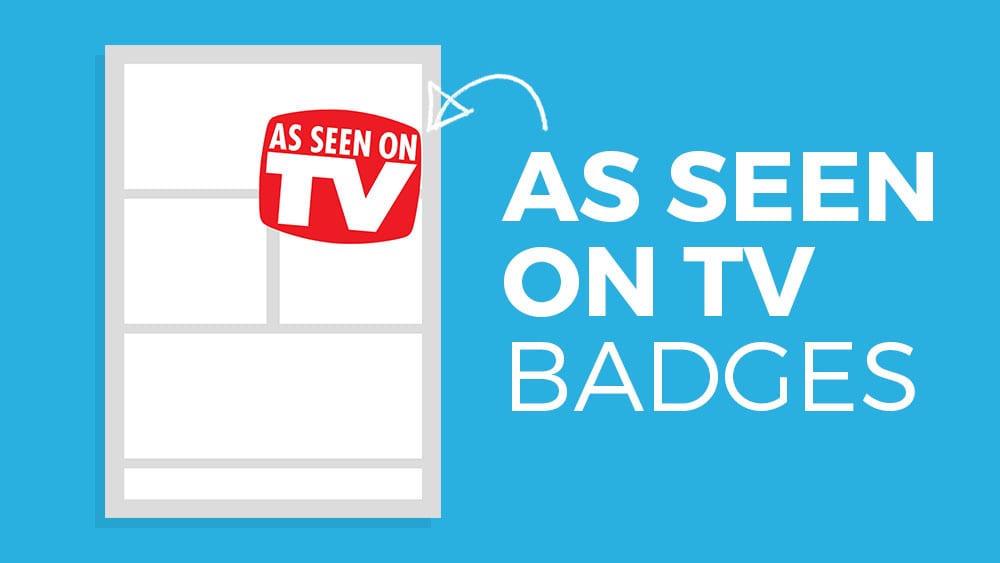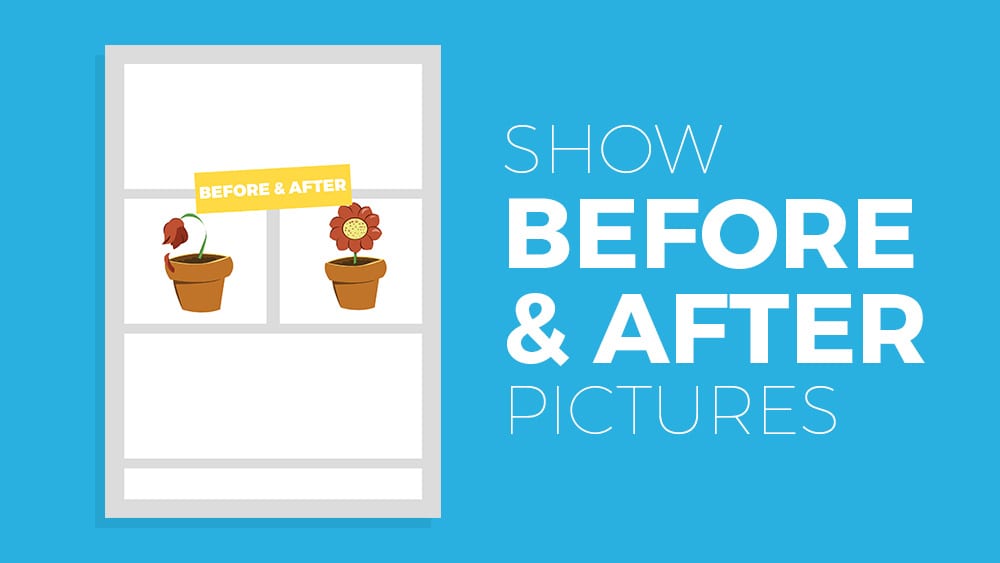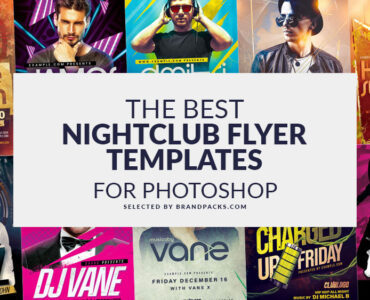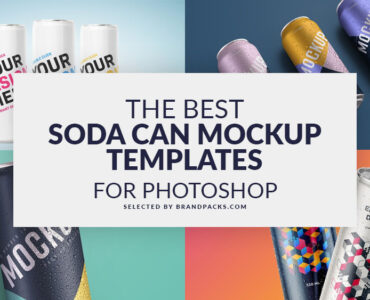Understanding the fundamental concepts of selling products can set you apart from other designers.
Whilst most designers focus solely on the form of their designs, the best designers find a balance between form and function (aka selling).
Whether you’re designing flyers for a local event or updating a beer menu design, your job is to help clients sell more of their products.
You may not be employed as a marketer, but understanding the nuts and bolts of marketing can help you to become a more effective (and more valuable) designer.
Why should print designs inspire trust?
Creating trust and rapport with customers is one of the most important elements of any business’ marketing.
If a customer is expected to hand over their money, they need to know they’re buying from someone they can trust.
For example, to hire a handyman and let them enter your home, you want to be assured that they can be trusted.
Likewise, before you book an appointment with a local medical professional, you’re going to want to know they’re the best in town.
So how can you add trust to your designs?
Creating trustworthy design work doesn’t require a whole new qualification. It’s actually quite easy. With just a handful of trust elements added to your designs, you can employ the same marketing “tricks” as used by the big brands.
After you’ve read through these 6 easy ways for adding “trust elements” to your print designs, it’ll all click into place.
In fact, I’ll bet my bottom dollar that once you’ve read through this post, you’ll start noticing “trust elements” on every big-company print ad that you see.
So let’s get into it: Here are 6 quick & easy tips for creating more trustworthy print marketing:
1. As seen on TV
Since the invention of TV, the words “As seen on TV!” have been added to print advertisements the world over.
For a long time being featured on TV has been the ultimate proof that a business is well-known and trust worthy. This is for two reasons:
Firstly it shows that a company is large enough (and therefore has enough customers) to afford TV advertising. A paid ad may in itself not guarantee trust, but TV advertising is heavily regulated and oftentimes government bodies must first approve ads.
Secondly, if a business has been featured on local news or in a TV show, it implies they’re trusted leader in their field. For a product or business to be featured on a TV show, a TV producer would first need to research and approve the business.
Obviously you shouldn't advertise that you've been seen on TV if you haven't. But if you have, this is a low-hanging option for increasing the trustworthiness of your printed advertisements.
2. Customer Testimonials
Adding testimonials to print advertisements is the equivalent of adding short & easy to read product reviews.
Testimonials come in two key formats: customer reviews and expert recommendations.
Customer reviews:
Adding customer reviews inspires trust by showing readers that customers just like them find this product useful.
Customer reviews can be found in a variety of places, such as Facebook comments & posts, review websites, blog comments and customer emails. Make sure you reach out to a customer and ask for permission before featuring their comment in your marketing.
Expert recommendations:
Showing expert recommendations (or other influencers) shows readers that someone with a highly respected reputation would risk their name on recommending a product.
Influencers come in many shapes and sizes. If you’re advertising for a local businesses, another prominent local business person can be perfect for adding expert testimonials.
For example: the head chef at a popular local restaurant is ideal for recommending a local butcher or wine shop.
3. Before & after photos
Before and after photos speak for themselves, which is precisely why they’re so effective.
With just two simple images displayed side by side, a business can instantly communicate the benefits of their service to a prospective customer. There are no words (and no sales pitches!) needed.
They are commonly used by cleaning and construction businesses to give real-life examples of the benefits their service can provide. Likewise you'll often see them used in weight loss ads, though some people find these off-putting and “untrue”.
When using before and after photos in your print marketing, it is important to use real life photos and never use stock images. Using stock images can have the opposite effect and instead of building trust with customers, they can make you look like a cheat.
4. Awards & Ratings
Awards are a quick and easy way to not just show off your skills, but show that industry experts have recognised your skills. This helps to back up claims that you offer a quality product and shows potential customers that the quality of your product or service has been independently verified.
- Restaurants do this with Michelin stars and government hygiene ratings.
- Tourist attractions & hotels do this with TripAdvisor certificates.
- Construction companies do this with certificates from regulatory bodies.
- Medical professionals do this with university degrees.
The list goes on.
At first you may not want to gloat about your achievements, but by showing your awards and recognitions you’re showing potential customers why they can trust you. And the more trust you can build with a customer, the more likely they are to buy your product.
5. Show Off Prestigious Client logos
Displaying client logos on a product or advert is one of the most commonly used methods of inspiring trust with customers. It’s incredibly effective too.
Heck, we even do it here on BrandPacks. But why does this inspire trust?
Adding a client or customer’s logo to your design work is the same as adding a testimonial, just without the words. It offers a short and snappy way for you to show customers “These people and businesses trust us, so you can too”.
When a customer picks up your product or reads through a brochure design and sees that reputable companies use your product, they’re much more likely to trust you.
And all they need to see is a logo. No time wasted reading text!
You’ll see this tactic used the world over with companies proudly displaying the logos of their customers, sponsors and investors. (Even restaurants do this by posting pictures of celebrity clientele!)
6. Use high quality designs
There are many important factors in a successful marketing campaign. But all the smart tactics in the world won’t save designs that look like they were produced by a 5 year old.
First impressions count, so ensuring your print designs are professional and easy to read is essential.
In fact, studies by Google have shown that people can form an opinion about a business in just 17 milliseconds, based solely on the quality of their website design.
So it would be appropriate to assume the same applies to print.
Whether you're the freelancer who creates the design or the marketer who uses it, the quality of your design can have a dramatic effect on the success of your business.
An aesthetically pleasing design will show customers that you value your brand and you're willing to invest in it.
An easy way to quickly upgrade the quality of your print designs is to start with a readymade template, such as our templates here on BrandPacks.
Final thoughts
You don't need to use all of these tactics with every single design you create. Sometimes it's not appropriate to use any at all. It's also important to note that using these these tips alone won't guarantee customers will trust your brand, but they will go a long way to helping.
With that said, I'd love to know what you think of this article and if you can you recommend any other tips to help fellow readers?
If you can, please leave them in the comments for others below.
Thanks for reading,
Adam.












FANTASTIC article!! Thanks for sharing this information!!
Glad you found it useful, Holly! Thanks for the thumbs up 😉